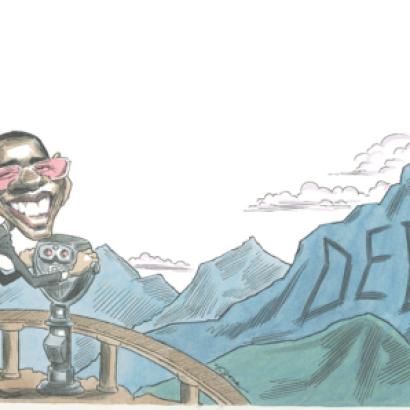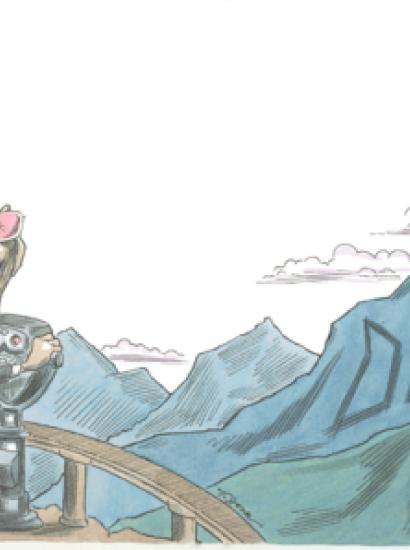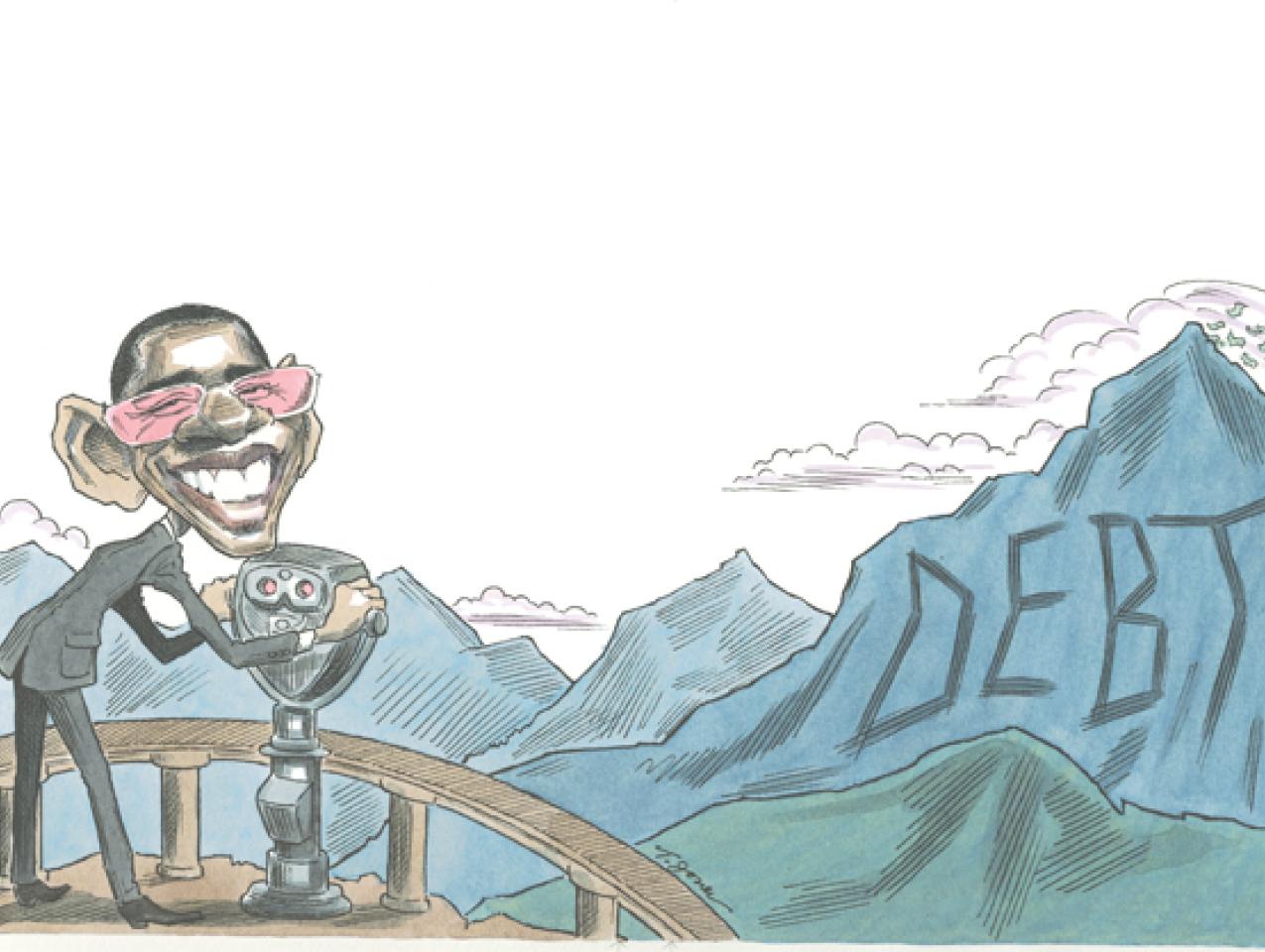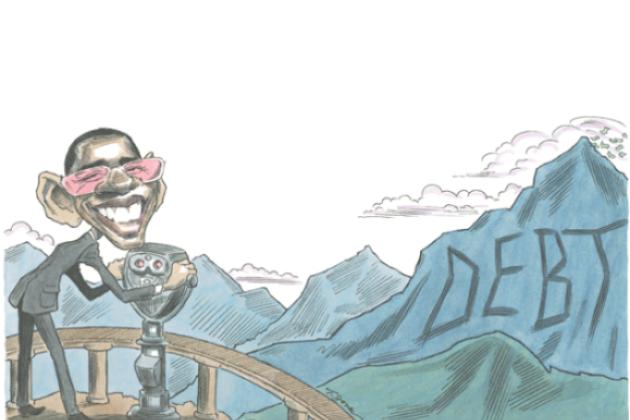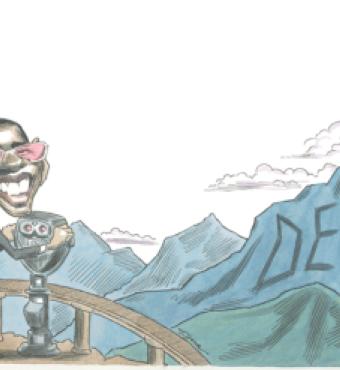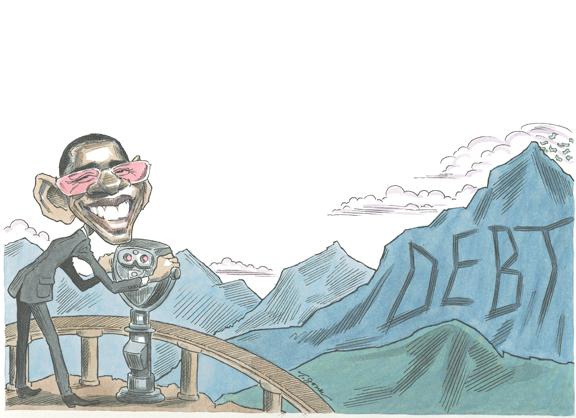- Budget & Spending
- Economics
- Law & Policy
- Regulation & Property Rights
- Politics, Institutions, and Public Opinion
The illusion that Barack Obama will lead from the economic center has quickly come to an end. His policies are designed to radically re-engineer the market-based U.S. economy, not just mitigate the recession and financial crisis. Instead of combining the best policies of past Democratic presidents— John F. Kennedy on taxes, Bill Clinton on welfare reform and a balanced budget, for instance—President Obama is returning to Jimmy Carter’s higher taxes and Clinton’s draconian defense drawdown. Obama’s $3.6 trillion budget blueprint, by his own admission, redefines the role of government in our economy and society. The budget more than doubles the national debt held by the public, adding more to the debt than all previous presidents combined: more than $163,000 per income-tax-paying family. It reduces defense spending to a level not sustained since the dangerous days before World War II, while increasing nondefense spending to the highest level in U.S. history (both relative to GDP). It would raise taxes to historically high levels (again, relative to GDP). And all of this before addressing the impending explosion in Social Security and Medicare costs.
To be fair, specific parts of the president’s budget are admirable and deserve support, such as increased means-testing in agriculture and medical payments; extension of unemployment benefits, given the recession; permanent indexing of the alternative minimum tax; recognizing the potential need for further financial rescue and likely losses thereon; and bringing spending into the budget that was previously in supplemental appropriations, such as funding for the wars in Iraq and Afghanistan. The specific problems, however, far outweigh the positives.
First are the quite optimistic forecasts, despite the higher taxes and government micromanagement that will eventually harm the economy. Compared to projections by private forecasters or the nonpartisan Congressional Budget Office, the Obama budget projects a much shallower recession, then stronger recovery and long-run growth. It implies a vast amount of additional spending and higher taxes beyond even the record levels explicitly stated. For example, it calls for a down payment on universal health care, with no idea where the additional “resources” would be found.
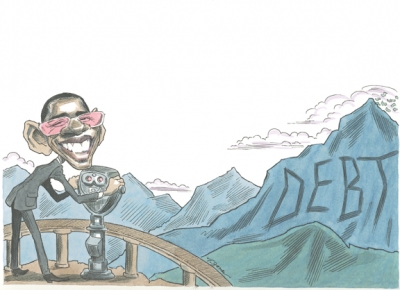
Obama has insisted he will deal with the projected deficits in Medicare and Social Security. While reform of these programs is vital, the president has shown little interest in reining in the growth of real spending per beneficiary and has rejected increasing the retirement age. Instead, he has proposed uncapping additional taxes on earnings well above the current payroll tax cap of $106,800—a bad policy that would raise marginal tax rates still further and barely dent the long-run deficit.
Increasing the top tax rates on earnings to 39.6 percent and on capital gains and dividends to 20 percent will reduce incentives for our most productive citizens and small businesses to work, save, and invest—with effective rates higher still because of restrictions on itemized deductions and the Social Security tax increases. As every student of economics learns, high marginal rates distort economic decisions, the damage from which rises with the square of the rates (doubling the rates quadruples the harm).
As for energy policy, the president’s cap-and-trade plan for carbon dioxide would ensnare a vast network of covered sources, opening up countless opportunities for political manipulation, bureaucracy, or worse. It would most likely exacerbate volatility in energy prices, as energy permit prices soar in booms and collapse in busts. The European emissions trading system has been a dismal failure. A direct, transparent carbon tax would be far better.
Moreover, the president’s energy proposals radically underestimate the time frame for finding significant alternatives. The Energy Department estimates that the United States and the world will need a lot more oil and gas in the meantime, necessitating $11 trillion in capital investment to avoid permanently higher prices.
The president proposes a large defense drawdown to help pay for exploding nondefense outlays—a tactic similar to those of Presidents Carter and Clinton, which were widely perceived by both Republicans and Democrats as having gone too far, leaving large holes in the U.S. military.
The president’s proposed limitations on the value of itemized deductions for those in the top tax brackets would deal a severe blow to itemized charitable contributions, half of which are made by those at the top. This change would increase the cost to the donor by roughly 20 percent (to 72 cents from just over 60 cents per dollar donated). Reductions in giving would be large and permanent, even after the recession ends and the financial markets rebound.
An attack on decentralization permeates the budget—for example, killing the private fee–for–service Medicare option—and this would curtail the experimentation, innovation, and competition that provide a road map to greater effectiveness. Pervasive government subsidies and mandates—in health, pharmaceuticals, energy, and the like—will do a poor job of picking winners and losers (ask the Japanese or Europeans) and will be difficult to unwind as recipients lobby for continuation and expansion. Expanding the scale and scope of government largess means that increasing numbers of our best entrepreneurs, managers, and workers will spend their time and talent chasing handouts subject to bureaucratic diktats, not pursuing the marketplace needs and wants of consumers.
America’s competitors have lower corporate tax rates and tax only domestic earnings, yet the Obama budget seeks to restrict deferral of taxes on overseas earnings, arguing that it drives jobs abroad. The academic research (most notably by Mihir Desai, C. Fritz Foley, and James Hines Jr.) reveals the opposite: American firms’ overseas investments strengthen their domestic operations and employee compensation.
Finally, new and expanded refundable tax credits would raise the fraction of taxpayers paying no income taxes from 41 percent to almost 50 percent. This is potentially the most pernicious feature of the president’s budget because it would cement a permanent voting majority with no stake in controlling the cost of general government.
TAKING APART THE DUBIOUS ASSUMPTIONS
Obama and his economic officials point out, not without justification, that he inherited an enormous economic and financial crisis and a large deficit. On this score the president is correct: he cannot rightly be blamed for what he inherited. All presidents present the best possible case for their budgets, but the mind-numbing array of budgetary numbers offers innumerable opportunities to conjure up misleading comparisons. What follows is an attempt to sort them out.
Obama claims that his budget will reduce the deficit by half, will shave $2 trillion off the debt (the cumulative deficit over his ten-year budget horizon), and will not raise taxes on anyone making less than $250,000 a year. It is far more accurate to describe Obama’s budget as almost tripling the deficit. It adds $6.5 trillion to the national debt, and leaves future U.S. taxpayers (many of whom will make far less than $250,000) with the tab. Moreover, this debt explosion does not even account for the looming Medicare and Social Security cost crises.
The estimated deficits and debt projections have been tallied by the Congressional Budget Office. Looking at these numbers allows us to calculate what Obama has already added and proposes to add by his policies and compare it to a “do nothing” baseline. The CBO baseline cumulative deficit for the Obama 2010–19 budget is $9.3 trillion. How much additional deficit and debt does Obama add relative to a do-nothing budget with none of his programs? Obama’s “debt difference” turns out to be $4.829 trillion— that is, his tax and spending proposals add that much to the do-nothing baseline.
But the budget also adds $177 billion to the fiscal year 2009 budget. To this must be added the $195 billion in 2009 legislated add-ons (for instance, the stimulus bill) since Obama’s election that were already incorporated in the CBO baseline and the corresponding $1.267 trillion in addons for 2010–19. This brings Obama’s total additional debt to $6.5 trillion, not his claimed $2 trillion reduction (which was mostly a phantom cut from an imagined ten-year continuation of peak Iraq war spending).
The claim to reduce the deficit by half compares this year’s immense projected, mostly inherited, $1.8 trillion deficit (13 percent of GDP) to the projected fiscal year 2013 deficit, the last of Obama’s current term. While it is technically correct that the 2013 deficit would be less than half this year’s engorged level, a do-nothing budget would reduce it by 84 percent. Compared to the do-nothing option, Obama’s deficit is more than 2.5 times larger in fiscal year 2013. And the 2013 deficit presumes that there will have been several years of economic recovery, that funds will be returned from the financial bailouts, and that U.S. forces will have withdrawn from Iraq.
Finally, what about the claim that taxes will not increase for those earning less than $250,000 a year? Obama must reconcile his arithmetic. Every dollar of debt he runs up means that future taxes must be $1 higher in present- value terms. Obama is going to leave a legacy of $6.5 trillion in additional future taxes unless he dramatically cuts spending. (With interest, the future tax increases would be much larger.) That money represents a stealth tax increase, a ticking time bomb.
What does $6.5 trillion in additional debt imply for the typical family? If this amount is spread evenly among all those paying income taxes (under Obama’s plan, these people are a little over 50 percent of the population), every income-tax-paying family would get a tax bill for $163,000. (In ten years, interest would bring the total to well over $200,000 if paid all at once. If paid annually over the succeeding ten years, the tax hike every year would average almost $26,000.) This obligation would be in addition to Obama’s explicit tax hikes. While the future tax time-bomb is pushed beyond Obama’s budget horizon, and future presidents and Congresses will decide how to find the money, the debt is likely to be repaid by future income-tax increases, as these are general- fund deficits.
We can get a rough idea of who is likely to pay by distributing this $6.5 trillion in future taxes according to the most recent distribution of incometax burdens. We know the top 1–5% of income-tax payers pay a vastly disproportionate share of taxes. But it also turns out that Obama’s massive additional debt implies an extra tax bill, if paid today, of over $100,000 for people with incomes of $150,000 (far below Obama’s tax-hike cutoff of $250,000). This would amount to more than $16,000 a year if paid annually over ten years.
PREPARING FOR A PERMANENT BURDEN
Neither a large deficit in a recession nor a small increase from the current modest level in the debt-to-GDP ratio is worrisome. And at a 50 percent debt–to–GDP ratio, with nominal GDP growing 4 percent (the CBO outyear forecast), deficits of 2 percent of GDP would not be increasing the debt burden relative to income. But what are not just worrisome but dangerous are the growing trillion-dollar deficits in the latter years of the Obama budget. These deficits are so large for a prosperous nation in peacetime—three times safe levels—that they would cause the debt burden to soar toward bananarepublic levels. That is a recipe for a permanent drag on growth and serious pressure on the Federal Reserve to inflate—not a harbinger of the new era of rising prosperity that Obama and his advisers foresee.
The assumptions underlying the president’s economic program seem bereft of rigorous analysis and a careful reading of history. The missteps include the poorly designed stimulus bill and financial rescue plan, and the idea that the enormous expansion of government spending, taxes, and debt will somehow permanently strengthen economic growth. History suggests that new government programs, however noble the intent, more often wind up delivering less, more slowly, at far higher cost than projected, with potentially damaging unintended consequences. The most recent case, of course, was the government’s meddling in the housing market to bring home ownership to low-income families, which became a prime cause of the current economic and financial disaster.
Regarding the growth effects of a large expansion of government, the European social-welfare states present a window on our potential future. Their standards of living are 30 percent lower than ours. Rounding off the rough edges of our economic system may well be called for, but a major, perhaps irreversible, step toward a European—style social-welfare state—with its concomitant long-run economic stagnation—is not.








